Click button for detailed article about each place.
MONACO

Monaco is the world’s most deluxe country, a land of glitz, glamour and extreme jet-set lifestyles, yet you can see it without spending very much. You could walk from one end of the country to the other in an hour, because it is only three-quarters of a square mile in size (2 square kilometers), making it the world’s second smallest country after the Vatican. Easy to see in one day, Monaco is about three times the size of The Mall in Washington, or half that of New York's Central Park. It’s also the world’s most densely populated country, yet they have developed with such intelligence that it is also one of the most pleasant countries, with a quality of life double that of neighboring France, and the world’s longest life expectancy at 90 years – it’s good to have endless money and the best medical facilities.
World’s richest nation, with record-busting per-capita wealth and $200,00 average income, and the most expensive property, but the good news is you can visit Monaco on a shoestring, enjoying a day-trip from Nice while spending practically nothing, as we suggest here with economical bus rides and free walks to the palace, Casino, marina and many beautiful sights. Or splurge a bit, buy a bus pass, eat a nice meal, have a drink, gamble, enjoy the good life in this amazing little country.
.jpg)
Monaco has a very long history, summarized down below, but in a nutshell, it has been a sovereign nation since 1861 when it gained independence from France. Within the nation of Monaco there are four main sections: Monte Carlo (with the famous casino), Monaco-Ville, (the Old Town and Palace), La Condamine (marina and downtown shopping) and Fontvieille (recent land-fill residential zone). Famous for gambling, high-end shopping and museums, our main focus here is navigating nearly the entire country in one day with walking tours through lovely neighborhoods.
We are presenting an innovative itinerary that gives you various choices of long, medium or short routes, or very, very short, just the casino. Monaco has so many interesting sites to discover that you would do well to allocate at least one full day and come along one our maximum tour, Plan A.
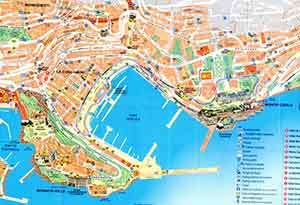
GETTING HERE:
We start out from the city of Nice, just 30 minutes away by train or bus. As emphasized already, Nice makes the perfect home base for exploring Monaco and the Cote d’Azur. We shall easily get to Monaco by bus or train, each with certain advantages, but overall the bus is better.
BUS:
For only 1.5 euro, bus number 100 transports you from Nice to Monaco on a beautiful 45-minute ride along the shoreline, offering one of the great bargains of Europe -- an international trip with scenery, which also provides the friendly traveller an opportunity to meet some locals on board and score a few travel tips – they usually enjoy helping. If you want to strike up that conversation on the bus, ride standing and look for a willing passenger. You can buy a bus ticket from the driver or a machine at the Nice bus stop, but it is better to purchase the special Ticket Azur, for the same low price from the Lignes d’Azur boutiques near the train station, or on Blvd. Jean Jaures on the edge of the Old Town, a few blocks before Place Garibaldi, where you catch the bus on Rue Catherine Segurane. With this Ticket Azur you can make one transfer in Monaco onto the local bus (if within 2 ½ hours of starting time), saving 2 euro. If you plan to spend a full day exploring Monaco and don’t want to do all the free walking we suggest here, it is worth purchasing the one-day bus pass for 5.50 euro from the local bus driver, but if you are only here to see the casino and palace, then just use your free transfer and walk.
Arriving from Nice by bus, you will cross no physical evidence of an international border but you enter the country after passing a green traffic circle, just before a tunnel appears on your right.
The first bus stop is Place d’Armes for the Old Town and Palace.
The Ideal Route to see Monaco in one full day:
1. Bus from Nice to Place d’Armes
2. Free transfer to local bus up to Monaco-Ville (The Rock)
3. Walk through The Rock (Old Town and Palace)
4. Walk down the Rampe Major (or ride bus) to Rue Grimaldi
5. Explore La Condamine shopping area
6. Take bus to Monte Carlo
7. Enjoy gardens, Casino and shopping areas
8. Bus back to Nice
Some visitors want to see everything, while others would like to see a lot of good stuff without killing themselves, and many speedsters want just a few highlights. During our group visit we shall decide by consensus which approach to take, with options considered each step along the way. To make it clear we occasionally refer here to plans A, B and C, long to short itineraries. A complete itinerary is presented as the ideal goal, Plan A, and then various short cuts are included along with a few bonus extensions.
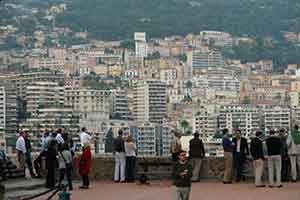
Plan A thoroughly covers the nation by starting near the west end and walking to the other end, about 2 miles, with some meandering, eating, gambling and shopping along the way, helped out by a couple of bus rides, which will add up to at least 6 miles if you go for the whole program. However, many travellers are only interested in Plan B, the Casino and Palace, so in that case we could just follow steps 1 and 2 then take the city bus to the Casino, which can all be done in a couple of hours.
Monaco is worth taking the time to see properly. Although Monaco is a small place it can be confusing and tiring to get around, especially considering all those hills you might be forced to climb if you don’t find some of the 33 public elevators and escalators. Follow our route, modified to suit you preferences, and you will have no problems.
BEGIN at Monaco-Ville up on The Rock:
Exit the bus from Nice at the first stop, Place d’Armes and transfer to local bus number 1 or 2 for the ride to the top of The Rock. Get off the bus at the Place de la Visitation stop, Monaco-Ville, an obvious wide plaza at the end of the line where the bus turns around.
As you explore the Old Town take your time and enjoy the various diversions: narrow pedestrian lanes, breathtaking views, numerous souvenir shops, restaurants, ice cream, the Cathedral, Palace and general feeling of medieval antiquity. This is where Monaco first began, back in the 1300s and 1400s up on this little hilltop which provided a natural defense against marauding pirates and attacking enemies, as described in the detailed history down below.
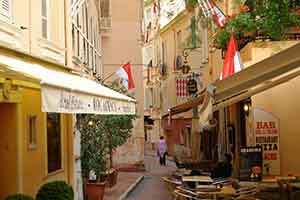
However your enjoyment in these narrow lanes is going to be tempered by when you are here. Mid-summer, mid-day, this could be tour group hell, mobbed by thousands of lemmings following their leader. On the other hand if you planned your holiday for the off-season as recommended here, you will be able to peacefully enjoy these picturesque lanes, and almost imagine stepping back four centuries. In the off-season the Old Town is just as attractive, with its ancient walls and buildings, as any of the other rock villages of the Riviera.
The Old Town consists of three main pedestrian lanes, rue Basse, rue Comte Félix Gastaldi and rue Emile de Loth, with small connecting side alleys and several other streets in a small space just 400 meters long, and 150 meters wide. Two blocks from the bus stop you arrive at Place de la Marie where those three pedestrian lanes come together. Choose the left fork, Gastaldi, and walk a couple blocks to the cathedral, which you first see from the back end.
The Cathedral of St. Nicholas is a grand neo-Romanesque church that was designed and completed in 1897, built on the site of a much older church. It is quite large for such a small town, 75 yards long, and at the transepts 32 yards. The shafts of the columns in the choir are monoliths. The burial chapel of the royalty here includes the tomb of Princess Grace, the beautiful American actress, married Prince Rainier in 1956, then retired from acting and became Princess of Monaco until her death in 1982. Grace Kelly suffered a stroke while driving her car and lost control and crashed. It was a great tragedy, a great loss. She was named as one of the top female stars of the American cinema by the American Film Institute, and was certainly one of the most glamorous ladies in memory.

After appreciating the cathedral be sure to walk a few paces in front of it for the view looking down on the newest part of Monaco towards Fontvielle. About 20% of Monaco, including Fontvielle, was built on landfill like this. Here we have a mix of residential, sports complex and marina that makes a beautiful sight. The panorama terrace is slightly hidden but easy to find if you're looking for it, only a few steps down.
If you are keen to see the Oceanographic Museum, one of the wonders of the world where one may study sea-monsters of every kind and of every epoch, together with their natural surroundings, and the manner in which they are caught, the various models of the Prince's yachts and whale boats -- you can walk there along the hillside gardens to your left. Return past the Cathedral and the Palace of Justice on Rue de l’Eglise, the lane in-between, continuing two blocks through the pedestrian network to Rue Comte Felix Gastaldi, and turn left towards the palace.

Obviously these lanes are so narrow they are not for cars, but for pedestrians only and they make for a nice romantic stroll. This is also a residential neighborhood as well, not just for the tourists, but very much for the locals. There is affordable food as well -- you can find budget sandwiches for 3 euro, not the tastiest meal but a pretty good deal – or sit at a café and watch the other tourists going by.
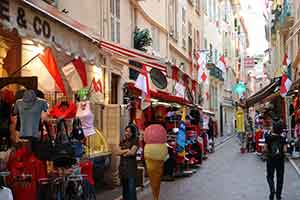
In three blocks you’ll arrive at Palace Square, the main attraction of The Rock because of the stupendous views, one of the great vistas of the world looking out across the building-covered hills of Monaco and that wonderful yacht basin filled with boats. Frequent cruise ships tie up at the massive breakwater on the right. You can see nearly the entire country, along with France and Italy in the distance, three nations in one selfie – yes, the perfect place for snapping a dozen photos. You’ll find that this terrace is a fun place to hang out. Notice the café on the terrace, a lovely spot for refreshment with a history going back more than a century, like everything else up here on the Rock, a charming place at which to sit, sheltered beneath palms and oleanders.
From here you vividly see how densely packed this city is – not only the world’s most-dense country, but twice as dense as number two, Singapore. Yet it is not the most-densely populated city in the world. There are many cities in Asia and elsewhere much more-densely populated. For example, population density of Monaco is 17,000 per square kilometer, but a few examples: the most-crowded is Dhaka, Bangladesh, at 45,000; Manila, 43,000; Mumbai, 31,000; Hong Kong, 24,000; Paris, 20,000.
Looking at the mass of concrete you might think this is too much, but it's comfortable, very well designed, making full use of the limited available land with deluxe apartments that are the world’s most expensive overall. In these tight quarters, many rooftops are utilized, such as a school with an Astroturf soccer playground. They manage things amazingly well, perhaps serving as a model for the other big cities of the world, showing how to grow and how to plan your city.
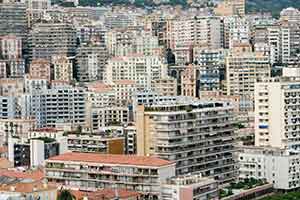
Of course this Place du Palais also offers a perfect view of the Palace, the 19th-century royal residence built on the site of the original fortress dating back at least 700 years. The Palace was once a Genoese Castle built in the 13th century, and then later enlarged by the Grimaldi's in 1630 and decorated in the Renaissance style. If you are here mid-day you can catch the uber-touristic and crowded Changing of the Guards at 11:55am. On the right side you can see the piles of cannonballs from the invasions of Louis XIV, with crenelated fortified walls behind. In the summer season you could visit inside the Palace, but there is not much to see.
The palace is the official royal residence of Monaco. The walls which surround the palace gardens date from 1552 to 1560, while the fortifications that surmount the Rampe belong to the seventeenth and eighteenth centuries. The sumptuous apartments with their interesting paintings and elaborate interiors are open to the public.
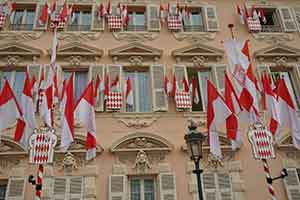
Albert the 2nd is the reigning monarch of Monaco having succeeded his father, Rainier III, in 2005. Albert is one of the richest monarchs in Europe, estimated worth at about $1 billion, although he doesn’t own the palace. The prince got married in 2011 to Charlene, the Princess of Monaco. She was a South African commoner but an Olympic swimmer and world-class beauty, mother to the royal twins, Gabriella and Jacques.
If we choose Plan B heading next to the Casino we skip the next destination, Condamine, so we walk 400 meters back through the cobbled lanes of the Old Town on a different lane, Rue Basse, to the bus stop, and get on either bus 1 or 2, which takes us to the Monte Carlo stop near the Tourist Information Office and Casino Gardens.
CONDAMINE
For those ambitious travelers wanting to see everything, Condamine, the downtown shopping area and marina, is worthwhile, offering a neighborhood geared more for locals than tourists. You can reach Condamine from Place du Palais quite easily either by taking the same city bus back down, or better yet, walk down the Rampe Major, which exits from the right side of the Place du Palais. Descending along this 16th century staircase-ramp only takes ten minutes, passing through a lush park and coming out at Place d’Armes, a market square at the beginning of Condamine. This place could be a good place to eat, maybe at the affordable Truffle Gourmet, and certainly to have a look around the open-air and covered portions, open every morning except Monday.
From here you can take a nice walk in the Condamine shoping area containing 200 boutiques, along Rue Grimaldi, a major retail street that connects in two blocks to the car-free zone of Rue Princess Caroline and a few other pedestrian lanes. Reasonably-priced restaurants, cafes and pizzerias can be found here, making this a good place for lunch to satisfy the huge appetite you already worked up.
You can quickly get a feel of Condamine by walking these few blocks. The buildings are in great shape, the stores are elegant, no vacant shops, no graffiti, no trash, the paving on sidewalks and streets is perfect, something like a Disneyland but this is for real. The easiest way to your next destination, the Casino and Monte Carlo, is walk to the end of Rue P Caroline, turn left on the waterfront Boulevard Albert 1er, to the nearby stop for bus 1, 2 or 6 for a 5-minute ride directly there.
MONTE CARLO
.jpg)
You have now arrived at the most elegant shopping area, the Golden Square, Carr é d'Or, framed by Avenue Monte Carlo, Place du Casino, Avenue des Beaux-Arts and Allees Lumieres, where Hermes, Christian Dior, Gucci, Bulgari, Cartier and Prada all are on display, and a few blocks away, the fabled Monte Carlo Casino.
Beautiful gardens in front of the Casino, the Jardins de la petit Afrique, abound in lush greenery, exquisite fountains, walkways, ducks in a pond, benches, amazing landscaping -- they have done a magnificent job with all this money. There is perhaps not a garden in the world so glorious, yet at the same time so purely artificial, in keeping with the man-made character of the entire nation. Even the trees are exotic. The oaks and chestnuts and umbrella pines of Provence are too common for this rich paradise, and as for the sacred olive, one would scarcely expect it to flourish so near the Casino. The gardens are full of rare palms, rubber trees, giant cactus, wonderful foreign shrubs, and the flowers are such as only millionaires can grow in perfection, created by that touch of gold.
To look inside the Casino costs 10 euro, after 2pm when it opens, plus another 20 euro if you want to enter the roulette area, open after 4pm, but the magnificent view from outside is free. Dress codes prohibit shorts or slippers (“Correct dress mandatory”), and the inner sanctum requires a jacket, which you can rent, and you need to show a passport. The décor is so wonderful you should go all the way in if interested in such things. On my first visit I got to see a lucky guy win a large bet on a single roulette number, then he let that entire stash ride on another number and won again, two consecutive jackpots.
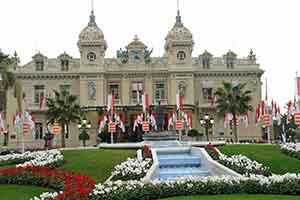
Europe’s first casino was opened here in 1856 in a desperate effort to save the bankrupt economy of Monaco, which was considered Europe’s poorest country. Started by Charles III, after whom Monte Carlo (“Mount Charles”) is named, the casino soon did its magic and the country came back to life. Arrival of the first train in 1868 really opened things up, and ten years later the casino was rebuilt in the Belle Époque style by Charles Garnier, architect of the Paris Opera. It has grown and expanded ever since.
The principal façade fronts on the town at Place du Casino while the south façade overlooks the sea. The entrance of the casino is between two towers with domes of colored tiles, and flanked by statues of the Seine and the Mediterranean. The south façade has three arcades with Venetian mosaics and two slender towers, and niches at the side with statues representing music and dance.
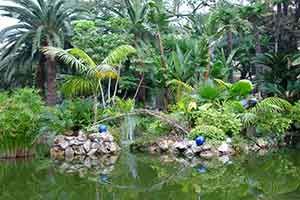
Next door is the Hôtel du Paris, one of the world's most deluxe five-star hotels that is so exclusive you are not even allowed inside unless you are a guest or look like a zillionaire. That would be a great place to celebrate your visit, inside the hotel complete with dinner at their Michelin three-star Louis XV restaurant run by Alaine Ducasse, perhaps the world's most famous chef -- but a couple might spend $1,000 on the unforgettable meal, including a mushroom salad at 86 euro or tasting menus at 230 or 310 euro per person, plus wine.
Across the square the less-formal Café de Paris welcomes everyone, and their casino has no entry fee or dress code. The brasserie boasts they are “the most popular venue for a rendezvous in Monaco -- a warm welcome in a decor featuring Belle Époque style windows, recalling the old Parisian bistros… an ideal place for lunch or dinner in the heart of Monte-Carlo, right on the legendary Place du Casino.” TripAdvisor has 1,600 reviews giving it 3.5 out of 5 stars, with only 5% disappointed. Another lush extension of the gardens is behind, enhanced by contemporary sculptures.
Walk through these casino gardens one block over to a lovely shopping mall, part of the Hôtel Métropole complex, the most-deluxe, ultra-modern shopping center in the middle of Monte Carlo. This highly-recommended, extremely expensive, marble-clad mall is multilevel, with 80 different shops and six places to eat including some reasonable sandwiches, and a restaurant and café run by Joël Robuchon.. It is a great place for people-watching because the mall is like a village center for the locals, a sophisticated urban downtown for those gilded privileged folks who reside in this fantasy land, by far the most modern and luxurious of all the shopping arcades in not just the Principality but along the entire Côte d'Azur as well.

If you wish to end your visit here, the stop for bus 100 to Nice is in front of the Allées Lumières shopping mall at the top of the Casino gardens where Avenue de la Costa joins with Avenue des Moulins. Or if going home by rail, you can take a local bus number 1 or 2 from the Casino area at Square Beaumarchais, in front of the Hotel Hermitage, easily reached from Place de Casino with a one-block walk west along beautiful Avenue des Beaux-Arts, another superb shopping street.
MORE WALKING
Plan A, if we decide to keep strolling along elegant shopping streets and want to see another beautiful part of the country, continues another block inland to Boulevard des Moulins, which is lined on both sides with upscale stores – a beautiful promenade with wide sidewalks and just two lanes of traffic. After walking along it for 500 meters, this upscale retail street ends one block from Monaco’s sandy beach and convention center, the Grimaldi Forum. One branch of the Musee National is also here, with temporary cultural exhibits about contemporary themes.
When finished this walk we are finally done with the main itinerary and can easily depart Monaco by catching bus 100 from this same Place de Moulins, back to Nice. This is a sweet exit strategy because you have covered the country from left to right with no backtracking, and you are boarding the bus on the far edge of Monaco with plenty of seats available at this end, but as the bus continues into the center many workers will board for their commute home to Nice. If you board at rush hour on the west end at Place d’Armes where you arrived in the morning, you will probably be standing for 50 minutes back to Nice, unless the bus is full -- then it won’t even pick you up. Four buses run hourly during the morning and evening rush hours. The last bus departs Monaco at 8:22pm. That completes your absolutely action-packed day in Monaco!!

Some fun facts and a little history:
ESCALATORS
There are 33 free escalators, elevators and moving sidewalks, including these seven main inclined lifts which provide public transport:
between the Place des Moulins and the beaches
between the Princess Grace Hospital Centre and the Exotic Garden
between the Port Hercules harbor and the Avenue de la Costa
between the Place Str Dévôte and the area of Moneghetti
between the terraces of the Casino and the Boulevard Louis II
between the Avenue des Citronniers and the Avenue Grande-Bretagne
between the highway and the Boulevard Larvotto
POPULATION
There only 36,000 residents of Monaco. Of this resident population: 21% are native citizens, called Monégasque; 28% French; 19% Italian, most of the rest a mix from Europe; 1% American. While French is the main language, you'll get by easily speaking English and Italian is also widely spoken here. Life expectancy is 94 for women and 86 for men, the world’s longest.
The land area of 2 square kilometers is about three times the size of The Mall in Washington, or half that of New York's Central Park.
ECONOMY
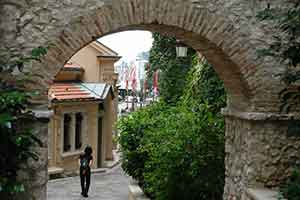
Not only does Monaco have the world's wealthiest people with the highest per capita income – it has got the most millionaires and billionaires per capita. Perhaps related, it also has the most police per capita and per area and practically no crime. It has a busy economy with 1200 retail stores and 400 wholesalers. There are about 50,000 jobs in Monaco for the 80,000 daytime population, so you can see this is a hard-working society of people.
There is no income tax for any resident in Monaco, except for French citizens, who pay income tax to France. However this is by no means a tax-free country, because everyone pays a 20% VAT on all goods and services, and there is a 33% tax on business profits earned outside of Monaco.
You might think that most government revenues are gained from the casino and related gambling ventures, but actually gambling represents only 3% of the nation's GDP. Half of the government's income is derived from the VAT, which is a tax on sales and commercial transactions. But the economy is primarily geared toward finance, commerce, and tourism. Low taxes have drawn many foreign companies to Monaco and account for around 75% of the $5.748 billion annual GDP income. The country does not offer tax havens or shelters to foreign corporations hoping to avoid paying taxes in their home countries, although they continue to face international pressure to abandon banking secrecy laws and help combat tax evasion. Of course banking is very important -- they've got 36 banks. Tourism accounts for close to 15% of the annual revenue. The overnight visitors totaled 300,000 per year, staying in any of the 15 different hotels.
Of course Monaco has some of the best tourist accommodation facilities in the world. Ultra high-class hotels in the five-star category are the Hermitage, Hôtel de Paris, Métropole Monte Carlo, and Monte Carlo Beach Hotel. You can also find budget hotels and there are even a couple of two star hotels.

Health and medicine is also a significant part of the economy here, with a major hospital and research facilities and other health providers, so this is a great place to come for medical care, especially to The Princess Grace Hospital Center.
According to our CIA: Monaco's reliance on tourism and banking for its economic growth has left it vulnerable to a downturn in France and other European economies which are the principality's main trade partners. In 2009, Monaco's GDP fell by 11.5% as the euro-zone crisis precipitated a sharp drop in tourism and retail activity and home sales. A modest recovery ensued in 2010 with GDP growth of 2.5%, but Monaco's economic prospects remain clouded in uncertainty tied to future euro-zone growth. Weak economic growth also has deteriorated public finances as the principality recorded a budget deficit of 1.3% of GDP in 2012. The state retains monopolies in a number of sectors, including tobacco, the telephone network, and the postal service. Living standards are among the world's highest.
POLITICS
Monaco is a constitutional monarchy under the Grimaldi family, which has been in power for over 700 years, Europe’s oldest royal dynasty. Prince Albert the Second of Monaco is the leader and his government runs the country in consensus with two elected assemblies: the National Council with 24 members elected by universal suffrage, and there's also the Communal Council under the leadership of the mayor, with 15 members who are elected directly by the population. The Prince holds a great deal of power, more than just a figurehead like other European royals, and yet the government structure rules along with the Prince.
Under his father, Prince Rainier III, the ruler held much more centralized power, but in 1962, a new constitution was adopted that created a dispersed government with many councils and ministers sharing power: Council of State; Minister of State; Economic and Social Council; Council of Government; Department of the Interior, along with departments of finance and economy, and so on. It is really quite a formal and effective government system.
Monaco became independent from France in 1861, and today it is a sovereign nation represented in the United Nations. It is not a member of the European Union, but the euro is the official currency. The nation is surrounded by France and there is a military arrangement where it is defended by France.
Monaco is quite active on the international scene with consulates in 72 different countries, and within Monaco, there are 65 countries that have embassies, along with 75 nations with consular offices, so this is by no means a small, isolated place.
HISTORY
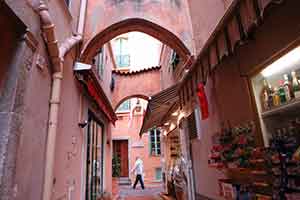
The isolated promontory of Monaco has been inhabited from the remotest antiquity, with Paleolithic remains dating back 400,000 years, perhaps left by Homo erectus 300,000 years before modern humans arrived in Europe. This southern coastline has always been an attractive environment for the comfortable life.
The written history of Monaco runs back for many centuries. During the 6th-century B.C. Phocaeans from Massalia (modern day Marseille) built a temple to Hercules here and founded the colony of Monoikos, which means an “isolated home”. The name of the colony is connected with local veneration of the Roman god Hercules, who was said to have constructed the ancient path that passed through the region from Spain to Italy. Even now there remains an admiration of Hercules: the largest port is named Port Hercule.
At the dawn of history we find Hecatceus, of Miletus, who lived five hundred years before Christ, mentioning it as one of the chief towns of the Ligurians, who were the first settled tribes to live in the area, stretching all the way from Italy to Marseilles. During the Carthaginian war its inhabitants took the side of Hannibal against the Romans, and afterwards of Caesar against Pompey.
Projecting as it does into the sea, it offered such a good shelter that Monaco became known as a port in Roman days. It was from this unpretentious haven that Cesar Augustus embarked for Genoa on his way back to Rome after his victories in southern Gaul.
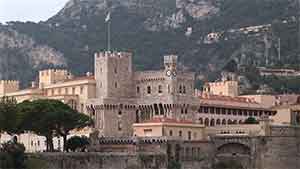
Following downfall of the Roman Empire, control of the area passed back and forth between the Goths, Lombards and Franks, with constant struggles that left the area nearly depopulated.
After the death of Charlemagne, the scattered Ligurian villages along these shores were constantly pillaged and destroyed by the Saracens, who in 814 took possession of the heights from which they descended from their mountain castles to ravage the coastal region. The Saracens held it continuously until the tenth century, when the Count of Arles expelled them. Then for a time it was a lawless rendezvous for pirates.
In 1191 the Holy Roman Emperor Henry VI granted Monaco to the wealthy and prosperous town of Genoa. His gift was coupled with the requirement that a fortress be built on Monaco to serve the Emperor in his wars with Marseilles and other towns in the region. Erection of the fort in the year 1215 on the site of the present palace marks the traditional founding date of Monaco. Outside the fort, rudiments of a town appeared as the first huts and houses of Monaco. Therefore, the town has already passed its 900th anniversary.
.jpg)
From 1270-1340 the citadel of Monaco served as a refuge alternately to Guelfs represented by the Grimaldi, and to Ghibellines under the guidance of the Spinola. Each party twice besieged the other within its walls, and each was twice defeated by its opponents. On the Christmas Eve, however, of 1306, while all the inhabitants were celebrating their solemn midnight mass, Francois Grimaldi contrived to enter Monaco disguised as a Franciscan monk, knocked on the palace door and then cut the throats of the sentinels to let in his accomplices, capturing the fortress. From this period Monaco has remained in the hands of the Grimaldi, united under one government. The Grimaldi coat of arms still celebrates this devious attack, proudly displaying a monk holding a drawn sword. Francois was succeeded by a cousin, Rainier I, whose son Charles I is considered the real founder of the nation, which expanded greatly in size under him, controlling land to Menton in the east while exerting economic influences beyond Antibes in the west.
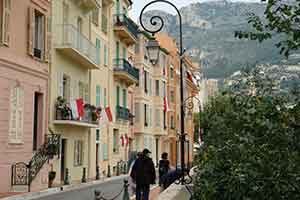
By 1489 Monaco was recognized by France as an independent country, although within 30 years Spain had claimed this rich land, followed by temporary conquests of French and Italian forces. Sovereignty was again regained in 1641 through a treaty with France. For the next three centuries Monaco was not a wealthy land, and derived a meager subsistence from vineyards, olive-woods, and patches of corn, cultivated with much effort on the scanty soil of the mountain slopes around. From their fortress on the promontory the Grimaldi organized the Monégasques to levy tolls on passing ships. Italy was not a united country. France had not yet extended her frontiers to the Riviera. This little corner of the Mediterranean escaped the juggernaut of developing political unity that crushed the life out of a dozen other feudal robber states.
With the French Revolution, the land and all its possessions were seized by the rebels, who imprisoned the royal family and sold off all their property. After things settled down with the fall of Napoleon, the principality of Monaco was given back to the Matignon-Grimaldi, but as a protectorate of the Kingdom of Sardinia, which retained control until 1860. After thirty-three years of oppression, the lands to the east, Menton and Roquebrune rebelled (March 2, 1848), and placed themselves under the protection of Italy and the Prince of Savoy, enjoying nine years of liberty, until they were induced, in 1860, to vote for annexation to France at the time of the cession of Nice. A treaty with France followed in 1861 that took away 95% of the territory of Monaco, assuring sovereignty but reducing the land to its present borders. At this time Monaco was still a poor place, where the Prince and his subjects had to maintain themselves from the produce of a few small vineyards and orchards scattered over patches of scanty soil on the slopes of the mountains.
Everything changed in 1863 with the construction of the Monte Carlo Casino, followed by opening of the railroad in 1868, leading directly into an economic boom based on gambling and the resort life that has continued ever since. The principality's mild climate, splendid scenery, hotels and gambling facilities have made Monaco world famous as a tourist and recreation center. With the modernizations of the 20th century the economy diversified and the government transformed from absolute monarchy to a democracy, resulting in the amazing little nation we see today.
VILLEFRANCHE
Villefranche is a little bonus you might consider visiting before or after seeing Monaco, depending on your schedule. It does not take more than one hour and can be worthwhile. The sequence can be determined during the visit. This little harbor town of Villefranche can be easily reached in a 15-minute scenic ride from Nice or Monaco on bus 81 or 100. Villefranche is quite small and often overlooked because so many other nearby glamorous destinations tempt visitors astray, but the pretty pastel-colored buildings lined up along the waterfront promenade in front of the yacht harbor make a brief stop here most enjoyable.

The bus stops in Villefranche on Avenue Albert 1st in the middle of the newer part of town at a busy intersection, Villefranche-Octroi. There is no need to explore this upper section of town, which is just a small cluster of shops and restaurants like any other, because you want to get into the Old Town section and the special waterfront down below, a ten-minute walk through lovely pedestrian lanes, downhill all the way. Tiny Villefranche has a population just 6,000, so you won’t get lost or spend too much time on this fun little stroll.
Finding the lane which leads to the waterfront is a little complicated: exit the bus and confront a busy three-way intersection, with Grand Café Venezia across the street to your left, at the junction of Albert 1st, Sadi Carnot and Maréchal Joffre. Looking northeast, take the middle road, Sadi Carnot, which leads in a few blocks to a hairpin curve where Place Charles D’Anjou departs from the northeast edge of this intersection. Don't hesitate to ask anyone “où est Place Charles D’Anjou” but it will be easier to find than it sounds, following these tips. Another landmark you could ask for is nearby Café de la Paix. This brings you to a staircase street, Rue de l’Église, which leads directly down through the Old Town and to the picturesque waterfront.

Before reaching bottom, the steps will deliver you into a small pedestrian maze of alleys, with shops, art galleries and cafés scattered around. It's one of those magical tangle of lanes you love to see when traveling, so don’t just march in a straight line downhill to the harbor, but enjoy the several attractive side routes along the way as you descend. These offshoots are level and easy to navigate, especially Rue du Poilu, the main pedestrian lane extending for several interesting blocks. One block further downhill, notice the arcaded street, Rue Obscure, a historic landmark that looks more like a tunnel than a lane. Five parallel pedestrian lanes making up this neighborhood, linked together by staircase streets, creating a wonderful maze for you to explore. Most lanes are residential, including some bed and breakfast and short-term rentals where you could spend a few quiet nights.
If you plunged straight down through the old town to the waterfront it might only take 5 minutes but you would be missing out on those fun diversions, so take your time, do some window-shopping, check out the cross streets and appreciate this special place.
You soon arrive at the picturesque boat harbor along the water's edge, lined with a row of outdoor restaurants and pastel-colored buildings. The main activity is just walking along the quay past restaurants, bars and little shops, with a few other people out for a stroll. The town is full of small shops, mostly expensive and catering for the tourist trade but also plenty offering the usual services for the permanent population. Prices here are rather high, so you would find better shopping deals back in Nice, but if you see something special, go for it.
One of the special features of this promenade is that the buildings are right at the waterfront with no big road in between, creating a rare ambience. There is a small, cobblestoned service road but restricted to local delivery traffic, resulting in a peaceful pedestrian promenade with the yacht basin on one side and a row of bars and restaurants on the other. It would be wonderful if this were the normal Mediterranean situation but alas, there is generally a big ugly noisy road along the waterfront no matter where you go, with rare exceptions like Villefranche, making this little diversion quite worthwhile.

It's such a small place that the entire waterfront of the Old Town is only 200 meters long, which you can easily walk in a few minutes. Of course you will be stopping as you go to soak up the views and maybe take a break at the attractive eateries. Cruise ships drop anchor in the bay and shuttle their travelers by tender to the small dock at the south end of the waterfront.
One can easily see this entire routine in an hour and then move along.
For departure, either catch a train or bus to continue your journey along the coast, perhaps heading on to Monaco or back to Nice. The train station is only another 300 meters further along a pleasant waterfront promenade, an easy, level stroll which also brings you towards the beach, just beyond the staircase leading up to the train platform.
The beach is not a fine sand, but much better than the smooth stones that make up Nice's beaches.
On the other hand if you wish to continue by bus you will need to walk back the way you came up all those steps that were so easy to walk down…hhhmm, not so effortless to climb back up. At this point the train sounds very attractive, especially with 3 departures every hour, so you don't have to worry about a schedule - just hop on and go. However, look at our Monaco chapter to see the advantage of arriving in Monaco on Bus 100, which you can catch in Villefranche at the same Octroi stop where you arrived. Getting to Monaco by bus puts you in closer proximity to the Old Town and Palace up on the Rock.
Because the town is quite small there are very few tourists clogging up the quaint, waterfront, although when a cruise ship pulls in during the high season, the beach and narrow lanes do get very busy. Ironically, most cruisers debark their ships and jump into a tour bus to Nice or Monaco, skipping Villefranche which is right under their noses, because they don’t have much time and want to get to the Big Star attractions.
Villefranche is part of the urban community of Nice Côte d'Azur, a suburb of the Nice metropolitan area. Villefranche-sur-Mer adjoins the city of Nice to the east along Mont Boron, Mont Alban and Mont Vinaigrier, and is 10 km (6.2 mi) south west of Monaco. Villefranche's bay is notable for reaching a significant depth of 95 m (320 ft) only a short distance from shore, forming one of the deepest natural harbors of any port in the Mediterranean Sea, providing safe anchorage for large ships.
This deep water harbor is home to many Mediterranean cruise ships, whose tenders routinely disgorge several thousand passengers on organized trips to nearby Eze Village, Nice and Monaco, an annual total of 250,000 cruisers.
In prehistoric times, Celto-ligurian tribes roamed the area and established farming communities on the surrounding hills. The Greeks and later the Romans used the natural harbor as a stopover en route to the Greek settlements around the Western Mediterranean. The old harbor of la Darse dates back to the 17th century, but during the 18th century, the city lost some of its maritime importance to the new harbor built in Nice but remained a military and naval base, occupied by the U.S. Navy until DeGaulle kicked the USA and NATO out in 1959.